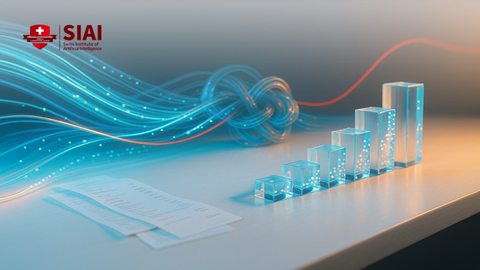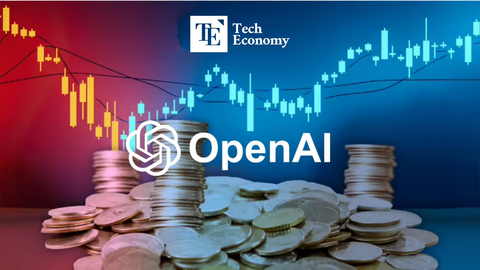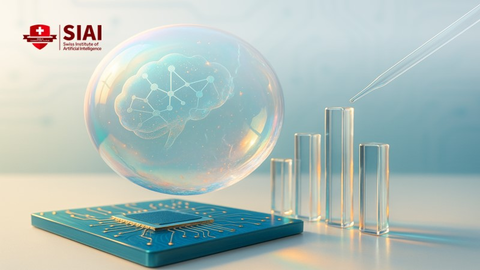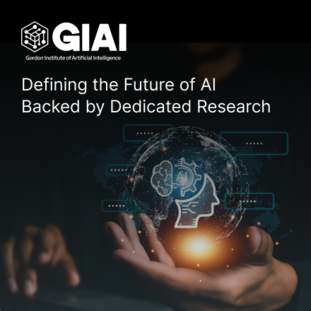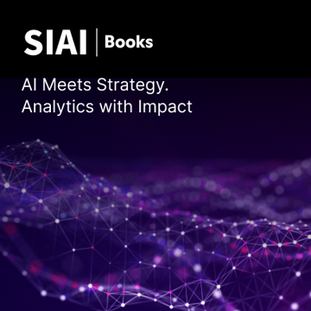[해외 DS] 이젠 펫케어도 AI로, 고양의 미묘한 표정도 읽어내
입력
수정
고양이의 표정을 통해 통증을 판단하는 AI 모델 개발 얼굴에서 입이 통증을 인식하는 데 가장 중요한 특징 동물의 정서적 삶에 관한 연구도 이어질 예정
[해외DS]는 해외 유수의 데이터 사이언스 전문지들에서 전하는 업계 전문가들의 의견을 담았습니다. 저희 데이터 사이언스 경영 연구소 (GIAI R&D Korea)에서 영어 원문 공개 조건으로 콘텐츠 제휴가 진행 중입니다.
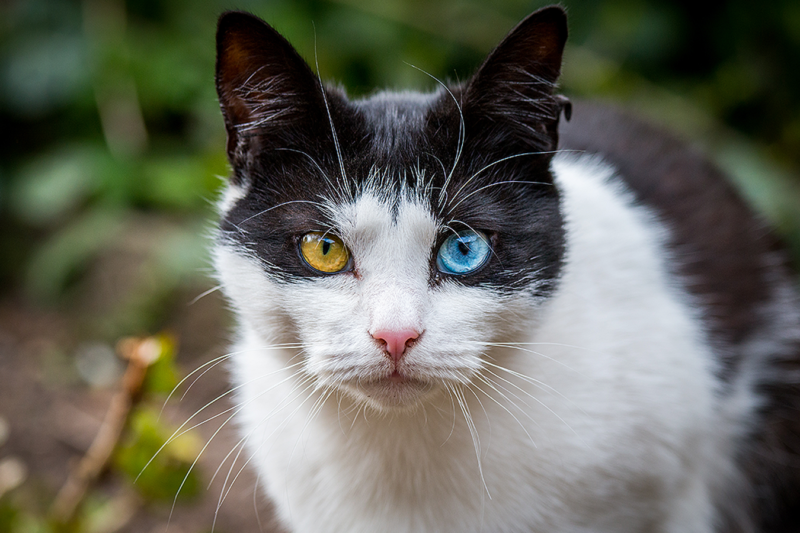
고양이는 신비주의자다. 개와 달리 고양이는 자신의 감정과 의도를 숨기는 데 능숙한데, 이는 아마도 고독한 사냥꾼으로 진화한 역사 때문일 것이다. 포커페이스를 유지하는 장기 때문에 고양이 집사와 수의사는 고양이의 표정과 행동에서 고통의 징후를 읽어내기 어려웠다. 하지만 새로운 인공 지능 프로그램을 통해 마침내 그 이면을 들여다볼 가능성이 제시됐다.
AI 연구원과 수의사로 구성된 한 연구팀은 동물병원에서 치료 중인 고양이의 표정을 바탕으로 통증 여부를 판단하는 두 가지 머신러닝 알고리즘을 개발하여 테스트를 진행했다. 최근 사이언티픽 리포트(Scientific Reports) 논문에서 소개된 이 자동화 시스템은 최대 77%의 정확도를 보여 강력한 수의학 도구로 사용될 전망이다. 이 연구는 당시 이스라엘 하이파대학에 재학 중이던 마르셀로 페이겔스타인(Marcelo Feighelstein)과 독일 하노버의 수의과대학에 재학 중이던 레아 헨체(Lea Henze)가 공동으로 주도했다.
논문의 공동 시니어 저자인 하이파대학의 컴퓨터과학자 안나 자만스키(Anna Zamansky)와 하노버 수의과대학의 홀거 볼크(Holger Volk)는 수의사와 고양이 보호자가 사진을 찍으면 자동으로 통증을 감지할 수 있는 모바일 앱을 개발할 계획이라고 말했다. 다른 AI 개발자들이 고양이 감정의 비밀을 밝혀내려고 시도한 적은 있지만(2021년에 출시된 Tably이라는 앱도 이를 주장하고 있다), 동료평가를 거친 과학적 연구를 발표한 것은 이번 연구가 처음이라고 전했다.
현재 수의사들은 고양이의 통증을 측정하기 위해 글래스고 복합측정통증척도 등 복잡한 검사를 사용하고 있지만, 동물의 표정과 행동을 세심하게 관찰해야 한다. 과학적으로 검증되긴 했지만, 이러한 척도는 수의사의 주관적인 평가에 의존하고 있어 시간이 오래 걸린다. 이 논문에 참여하지 않은 텔아비브대학교의 수의행동학자 스테판 브루어(Stephane Bleuer)는 이러한 점 때문에 기존의 테스트 방식을 추천하지 않는다고 밝혔다.
랜드마크 기반 AI, "고양이의 안면 수축량과 통증 척도를 매칭"
"기계가 시각 정보의 미묘한 디테일에 민감하므로 인간의 육안보다 더 많은 것을 볼 수 있다"라고 자만스키는 강조했다.
새로운 모델을 개발하기 위해 연구원들은 학습과 검증을 위한 데이터가 필요했다. 독일 하노버 수의과대학 동물병원에서 다양한 병력을 가진 다양한 품종과 연령대의 고양이 84마리의 사진을 표준치료의 하나로 촬영했다. 사진 속 고양이들은 글래스고 척도와 골절, 요로 문제 등 알려진 임상 질환으로 인한 예상 통증 수준에 따라 점수가 매겨졌다. 이 측정값은 연구팀의 AI 모델을 훈련하고 그 성능을 평가하는 데 사용됐다. 연구 저자에 따르면, 위 과정에서 고양이에게 어떠한 고통도 주지 않았다고 한다.
연구팀은 고양이 사진만으로 통증을 감지할 수 있는 두 가지 기계학습 알고리즘을 만들었다. 한 알고리즘은 귀, 눈, 입과 관련된 48개의 '랜드마크(landmarks)'를 이용해 안면 근육의 수축량(일반적인 통증의 지표)을 조사했다. 다른 알고리즘은 비정형 데이터에 대한 딥러닝 기법을 사용해 얼굴 전체의 근육 수축 및 기타 패턴을 분석했다.
랜드마크 기반 AI 접근법은 고양이의 통증 여부를 식별하는 데 77%의 정확도를 보였지만, 딥러닝 접근법은 65%에 불과했다. 연구진은 이러한 차이가 딥러닝 시스템이 '데이터에 굶주린' 시스템이기 때문에 발생할 수 있다고 설명했다. 해당 연구에서는 비교적 적은 양의 이미지 데이터만 사용할 수 있었다.
또한 연구진은 정확한 통증 인식에서 귀나 눈이 아닌 고양이의 입이 가장 중요한 얼굴 특징이라는 것을 발견했다. "이것은 AI의 장점이기도 하다. AI는 데이터의 숲에서 아무도 생각하지 못했던, 갑자기 차이를 만들어내는 무언가를 찾아낸다"라고 세바스찬 멜러(Sebastian Meller)는 전했다.
정확한 진단을 위해 겉으로 드러나는 표정과 실제 감정을 구분해야
그러나 감정과학 분야의 독일 심리학자 데니스 큐스터(Dennis Küster)는 위의 연구에서 표정과 감정을 구별하는 것이 중요하다고 지적했다. 인간을 대상으로 한 테스트에서 AI는 얼굴의 패턴을 인식하는 경향이 있으며, 기계가 그 뒤에 숨은 의미를 반드시 인식하는 것은 아니라고 그는 설명했다. 게다가 표정이 항상 특정 감정과 연결되는 것은 아니다. 큐스터는 사회적 미소를 예로 들었는데, 미소를 짓고 있더라도 그것이 반드시 행복감을 의미하지는 않는다고 꼬집었다.
하지만 감정 인식 AI가 잘하는 맥락도 있다고 그는 덧붙였다. 이번 연구에 참여하지 않은 미국 아칸소주 라이언칼리지의 심리학 조교수인 브리트니 플로키위츠(Brittany Florkiewicz)는 고양이나 다른 비인간종은 자신이 생각하고 느끼는 것을 말로 표현할 수 없기 때문에, 연구자들에게는 이러한 소통의 장벽을 넘을 수 있는 시스템을 개발하는 것이 중요하다고 말했다. AI는 입력되는 데이터만큼만 성능이 향상되기 때문에 데이터 세트가 크고 다양하며 사람의 감독하에 맥락과 미묘한 정보를 포함하는지 확인하는 것이 기계의 정확성을 높이는 데 도움이 될 것이라고 조언했다.
아울러 플로키위츠는 최근 고양이가 276가지 표정을 지을 수 있다는 사실을 발견했다. 그녀는 자만스키 팀과 협력하여 고양이가 고통을 느끼는지 여부를 평가하는 데 그치지 않고, 고양이의 정서적 삶에 대한 더 깊은 통찰력을 얻기 위해 연구할 계획이다. 또한 자만스키는 개를 포함한 다른 종으로 연구를 확장하고, 자동화된 시스템이 전신 동영상을 기반으로 고양이의 통증을 판단할 수 있는지 검증할 생각이다.
Cats Can Hide Their Pain—But Not from AI
Machine-learning software gets behind the inscrutable feline face and may improve pet care
Household cats are a secretive species. Unlike dogs, they are masters at masking their feelings and intentions—possibly because of their evolutionary history as solitary hunters. This built-in stoicism makes it hard for cat owners and veterinarians to read signs of pain in a cat’s facial expressions and behaviors, but new artificial intelligence programs may be able to finally peer behind the mask.
A team of AI researchers and veterinarians has created and tested two machine-learning algorithms that judged whether cats being treated in a veterinary hospital were experiencing pain based on the animals’ facial expressions. These automated systems, described in a recent Scientific Reports paper, were up to 77 percent accurate, suggesting the potential for powerful new veterinary tools. The study was co-led by Marcelo Feighelstein, then at Israel’s University of Haifa, and Lea Henze, then at the University of Veterinary Medicine Hannover in Germany.
The investigators plan to develop a mobile app that will let both veterinarians and cat owners snap a photograph to automatically detect pain, says Anna Zamansky, a computer scientist at the University of Haifa, who, along with Holger Volk of University of Veterinary Medicine Hannover, was a co-senior author of the paper. Although other AI developers have tried to unravel the secrets of feline emotions (an app called Tably, launched in 2021, also claims to do so), Zamansky says this study is the first to publish peer-reviewed scientific research about it.
Veterinarians currently measure feline pain using complex tests such as the Glasgow Composite Measure Pain Scale, which requires painstakingly examining an animal’s facial expressions and behaviors. Although scientifically validated, these scales rely on a veterinarian’s subjective assessment and are highly time-consuming. This discourages the use of such tests, says Stephane Bleuer, a veterinary behaviorist in Tel Aviv, who was not involved in the paper.
“Our belief is that the machine will do a better job,” Zamansky says of her team’s project. “The machine can see more than the naked human eye because it’s sensitive to subtle details of visual information.”
To develop the new model, the researchers needed data to train and test it. Photographs of 84 cats of various breeds and ages with varying medical histories were taken at the University of Veterinary Medicine Hannover’s animal hospital in Germany as part of standard care. The cats in these images had been scored based on the Glasgow scale and on the expected level of pain from their known clinical conditions—such as bone fractures or urinary tract problems. These measurements were used to train the team’s AI models and to evaluate their performance. The study authors say that none of their research inflicted any suffering on the cats.
The researchers created two machine-learning algorithms that could detect pain based on the cat photographs alone. One algorithm looked at the amount of facial muscle contraction (a common pain indicator) by using 48 “landmarks” involving the ears, eyes and mouth. The other algorithm used deep-learning methods for unstructured data to analyze the whole face for muscle contractions and other patterns.
The landmark-based AI approach was 77 percent accurate in identifying if a cat was in pain, but the deep-learning approach came in at only 65 percent. The researchers say this difference could stem from deep-learning systems being “data-hungry”—only a relatively small data set of images was available for this study.
The researchers also found that the cat’s mouth, instead of the ears or eyes, was the most important facial feature in accurate pain recognition, says study co-author Sebastian Meller, a veterinarian at the University of Veterinary Medicine. “We didn’t expect that, and that is also the beauty about AI, maybe,” Meller says. “It finds something in the forest of data that suddenly makes a difference that no one was thinking about before.”
It is important to distinguish between facial expressions and emotions, however, says Dennis Küster, a German psychologist with a background in emotion science, who was not involved in the study. Tests with humans have shown that AI tends to recognize facial patterns and not necessarily the meanings behind them, he explains. Moreover a facial expression may not always be associated with a particular emotion. “The best example is the social smile. So I might be smiling now, but maybe I just want to be friendly and indicate…, ‘Yeah, okay, let’s continue with this interview,’” Küster says. “We express certain things automatically, and they don’t necessarily mean that we are flowing over with happiness.”
Nevertheless, there are some contexts where emotion recognition AI can excel, he adds. Cats and other nonhuman species cannot vocalize what they are thinking or feeling, making it important for researchers to develop systems that can cross those communication barriers, says Brittany Florkiewicz, an assistant professor of psychology at Lyon College, who was not involved in the study. AI is only as good as the data it is fed, she notes. So ensuring the dataset is large, diverse and human-supervised—and that it contains contextual and nuanced information—will help make the machine more accurate, Florkiewicz says.
Florkiewicz recently found that cats can produce 276 facial expressions. She plans to collaborate with Zamansky’s team to gain deeper insights into felines’ emotional lives that will go beyond assessing whether or not they are in pain. Zamansky also plans to expand her research to include other species, including dogs, and to see whether automated systems can judge feline pain based on full-body videos.
Once a cat shows obvious signs of pain, it has probably been suffering for a long time; a convenient and practical pain app might allow for quicker detection of problems and could significantly advance cat care, Bleuer says. “When you improve the welfare of pets, you improve the welfare of people,” he says. “It’s like a family.”
This study focused on crossing interspecies communication barriers, and Zamansky points out that the researchers first had to overcome human ones: The international team members speak different languages, live in different countries and work in different disciplines. They are AI researchers, veterinarians, engineers and biologists. And their efforts ultimately aim to help a broad group of creatures encompassing cats, vets and pet owners. That effort led at least one researcher to cross a barrier of her own.
“Before we started this work, I was [completely a] dog person, but now I want to have a cat,” Zamansky says. “I think I fell in love with cats a bit.”

